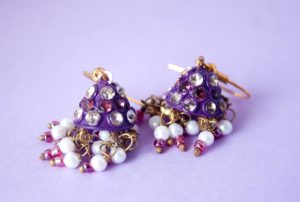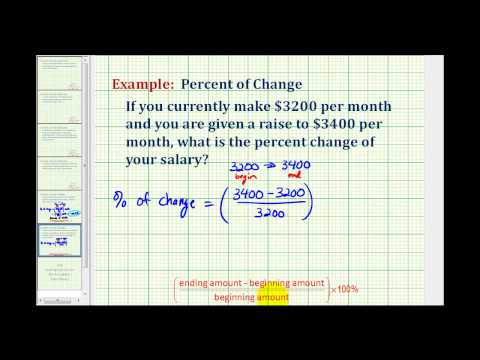2.1: Mark-Up Problems
- Page ID
- 45780
\( \newcommand{\vecs}[1]{\overset { \scriptstyle \rightharpoonup} {\mathbf{#1}} } \)
\( \newcommand{\vecd}[1]{\overset{-\!-\!\rightharpoonup}{\vphantom{a}\smash {#1}}} \)
\( \newcommand{\id}{\mathrm{id}}\) \( \newcommand{\Span}{\mathrm{span}}\)
( \newcommand{\kernel}{\mathrm{null}\,}\) \( \newcommand{\range}{\mathrm{range}\,}\)
\( \newcommand{\RealPart}{\mathrm{Re}}\) \( \newcommand{\ImaginaryPart}{\mathrm{Im}}\)
\( \newcommand{\Argument}{\mathrm{Arg}}\) \( \newcommand{\norm}[1]{\| #1 \|}\)
\( \newcommand{\inner}[2]{\langle #1, #2 \rangle}\)
\( \newcommand{\Span}{\mathrm{span}}\)
\( \newcommand{\id}{\mathrm{id}}\)
\( \newcommand{\Span}{\mathrm{span}}\)
\( \newcommand{\kernel}{\mathrm{null}\,}\)
\( \newcommand{\range}{\mathrm{range}\,}\)
\( \newcommand{\RealPart}{\mathrm{Re}}\)
\( \newcommand{\ImaginaryPart}{\mathrm{Im}}\)
\( \newcommand{\Argument}{\mathrm{Arg}}\)
\( \newcommand{\norm}[1]{\| #1 \|}\)
\( \newcommand{\inner}[2]{\langle #1, #2 \rangle}\)
\( \newcommand{\Span}{\mathrm{span}}\) \( \newcommand{\AA}{\unicode[.8,0]{x212B}}\)
\( \newcommand{\vectorA}[1]{\vec{#1}} % arrow\)
\( \newcommand{\vectorAt}[1]{\vec{\text{#1}}} % arrow\)
\( \newcommand{\vectorB}[1]{\overset { \scriptstyle \rightharpoonup} {\mathbf{#1}} } \)
\( \newcommand{\vectorC}[1]{\textbf{#1}} \)
\( \newcommand{\vectorD}[1]{\overrightarrow{#1}} \)
\( \newcommand{\vectorDt}[1]{\overrightarrow{\text{#1}}} \)
\( \newcommand{\vectE}[1]{\overset{-\!-\!\rightharpoonup}{\vphantom{a}\smash{\mathbf {#1}}}} \)
\( \newcommand{\vecs}[1]{\overset { \scriptstyle \rightharpoonup} {\mathbf{#1}} } \)
\( \newcommand{\vecd}[1]{\overset{-\!-\!\rightharpoonup}{\vphantom{a}\smash {#1}}} \)
\(\newcommand{\avec}{\mathbf a}\) \(\newcommand{\bvec}{\mathbf b}\) \(\newcommand{\cvec}{\mathbf c}\) \(\newcommand{\dvec}{\mathbf d}\) \(\newcommand{\dtil}{\widetilde{\mathbf d}}\) \(\newcommand{\evec}{\mathbf e}\) \(\newcommand{\fvec}{\mathbf f}\) \(\newcommand{\nvec}{\mathbf n}\) \(\newcommand{\pvec}{\mathbf p}\) \(\newcommand{\qvec}{\mathbf q}\) \(\newcommand{\svec}{\mathbf s}\) \(\newcommand{\tvec}{\mathbf t}\) \(\newcommand{\uvec}{\mathbf u}\) \(\newcommand{\vvec}{\mathbf v}\) \(\newcommand{\wvec}{\mathbf w}\) \(\newcommand{\xvec}{\mathbf x}\) \(\newcommand{\yvec}{\mathbf y}\) \(\newcommand{\zvec}{\mathbf z}\) \(\newcommand{\rvec}{\mathbf r}\) \(\newcommand{\mvec}{\mathbf m}\) \(\newcommand{\zerovec}{\mathbf 0}\) \(\newcommand{\onevec}{\mathbf 1}\) \(\newcommand{\real}{\mathbb R}\) \(\newcommand{\twovec}[2]{\left[\begin{array}{r}#1 \\ #2 \end{array}\right]}\) \(\newcommand{\ctwovec}[2]{\left[\begin{array}{c}#1 \\ #2 \end{array}\right]}\) \(\newcommand{\threevec}[3]{\left[\begin{array}{r}#1 \\ #2 \\ #3 \end{array}\right]}\) \(\newcommand{\cthreevec}[3]{\left[\begin{array}{c}#1 \\ #2 \\ #3 \end{array}\right]}\) \(\newcommand{\fourvec}[4]{\left[\begin{array}{r}#1 \\ #2 \\ #3 \\ #4 \end{array}\right]}\) \(\newcommand{\cfourvec}[4]{\left[\begin{array}{c}#1 \\ #2 \\ #3 \\ #4 \end{array}\right]}\) \(\newcommand{\fivevec}[5]{\left[\begin{array}{r}#1 \\ #2 \\ #3 \\ #4 \\ #5 \\ \end{array}\right]}\) \(\newcommand{\cfivevec}[5]{\left[\begin{array}{c}#1 \\ #2 \\ #3 \\ #4 \\ #5 \\ \end{array}\right]}\) \(\newcommand{\mattwo}[4]{\left[\begin{array}{rr}#1 \amp #2 \\ #3 \amp #4 \\ \end{array}\right]}\) \(\newcommand{\laspan}[1]{\text{Span}\{#1\}}\) \(\newcommand{\bcal}{\cal B}\) \(\newcommand{\ccal}{\cal C}\) \(\newcommand{\scal}{\cal S}\) \(\newcommand{\wcal}{\cal W}\) \(\newcommand{\ecal}{\cal E}\) \(\newcommand{\coords}[2]{\left\{#1\right\}_{#2}}\) \(\newcommand{\gray}[1]{\color{gray}{#1}}\) \(\newcommand{\lgray}[1]{\color{lightgray}{#1}}\) \(\newcommand{\rank}{\operatorname{rank}}\) \(\newcommand{\row}{\text{Row}}\) \(\newcommand{\col}{\text{Col}}\) \(\renewcommand{\row}{\text{Row}}\) \(\newcommand{\nul}{\text{Nul}}\) \(\newcommand{\var}{\text{Var}}\) \(\newcommand{\corr}{\text{corr}}\) \(\newcommand{\len}[1]{\left|#1\right|}\) \(\newcommand{\bbar}{\overline{\bvec}}\) \(\newcommand{\bhat}{\widehat{\bvec}}\) \(\newcommand{\bperp}{\bvec^\perp}\) \(\newcommand{\xhat}{\widehat{\xvec}}\) \(\newcommand{\vhat}{\widehat{\vvec}}\) \(\newcommand{\uhat}{\widehat{\uvec}}\) \(\newcommand{\what}{\widehat{\wvec}}\) \(\newcommand{\Sighat}{\widehat{\Sigma}}\) \(\newcommand{\lt}{<}\) \(\newcommand{\gt}{>}\) \(\newcommand{\amp}{&}\) \(\definecolor{fillinmathshade}{gray}{0.9}\)Learning OUTCOME
- Use mathematical notation to solve markup problems

Ana runs Blue Boat Designs, where she makes colorful beaded earrings. She sells her earrings to boutiques around Los Angeles for \($18\). A shop called Treasure Hunt purchases Ana’s earrings for \($18\), marks them up \(50\%\) and then sells them to shop customers for \($27\).
Applications of mark-up are very common in retail settings. The price a retailer pays for an item is called the wholesale price. The retailer then adds a mark-up to the wholesale price to get the list price, the price he sells the item for. The mark-up is usually calculated as a percent of the wholesale price. The percent is called the mark-up rate. To determine the amount of mark-up, multiply the mark-up rate by the wholesale price. We summarize the mark-up model in the box below.
Mark-up
The mark-up is the amount added to the wholesale price.
amount of mark-up = mark-up rate \(\cdot\) wholesale price
list price = wholesale price + mark up
The list price should always be more than the wholesale price, or it would be a mark-down, not a mark-up.
The mark-up rate can be less than, equal to, or greater than \(100\%\).
example
Adam’s art gallery bought a photograph at the wholesale price of \(\text{\$250}\). Adam marked the price up \(\text{40%}\). Find the amount of mark-up and the list price of the photograph.
[reveal-answer q=”661316″]Show Answer[/reveal-answer]
[hidden-answer a=”661316″]
Solution
| ⓐ | |
| Identify what you are asked to find. | What is the amount of mark-up? |
| Choose a variable to represent it. | Let \(m=\) the amount of each mark-up. |
| Write a sentence that gives the information to find it. | The mark-up is \(40\text{%}\) of the wholesale price. |
| Translate into an equation. |  |
| Simplify. | \(m=100\) |
| Check if this answer is reasonable. | |
| Yes. The markup rate is less than \(50\text{%}\) and \(\text{\$100}\) is less than half of \(\text{\$250}\). | |
| Write a complete sentence that answers the question. | The mark-up on the photograph was \(\text{\$100}\). |
| ⓑ | |
| Identify what you are asked to find. | What is the list price? |
| Choose a variable to represent it. | Let \(p=\) the list price. |
| Write a sentence that gives the information to find it. | The list price is the wholesale price plus the mark-up. |
| Translate into an equation. |  |
| Simplify. | \(p=350\) |
| Check if this answer is reasonable. | |
| Yes. The list price, \(\text{\$350}\), is more than the wholesale price, \(\text{\$250}\). | |
| Write a complete sentence that answers the question. | The list price of the photograph was \(\text{\$350}\). |
[/hidden-answer]
try it
[ohm_question hide_question_numbers=1]146778[/ohm_question]
TRY IT
[ohm_question hide_question_numbers=1]978[/ohm_question]
EXAMPLE
A very common mark-up strategy in retail stores is to simply double the price they paid for the item. Let’s walk through how you would calculate the mark-up rate for this situation.
Braided Salon purchases natural hair dyes for \($38\) from a beauty supply wholesaler. If the owner plans to double the price before selling it to customers, what is the mark-up rate?
[reveal-answer q=”664216″]Show Answer[/reveal-answer]
[hidden-answer a=”664216″]
Solution
If Braided Salon purchases the hair dye for \($38\), they will charge customers \($56\)\((2 \cdot $38 = $56)\). The mark-up in this case is the difference between the final price tag and the wholesale cost: \($56 - $38 = $38\).
amount of mark-up = mark-up rate \(\cdot\) wholesale price
\($38 = x \cdot $38\)
\(x = 1\)
\(1 = 100%\)
The mark-up rate is \(100%\) when doubling the wholesale cost.
[/hidden-answer]
The next question refers to profit, which, in this case, is the same as mark-up amount.
TRY IT
[ohm_question hide_question_numbers=1]154749[/ohm_question]
Mark-up is one type of percent of change problem. In the next video we show an example of how to calculate the percent increase of a salary, which is similar to the process of marking-up the price of an item.



